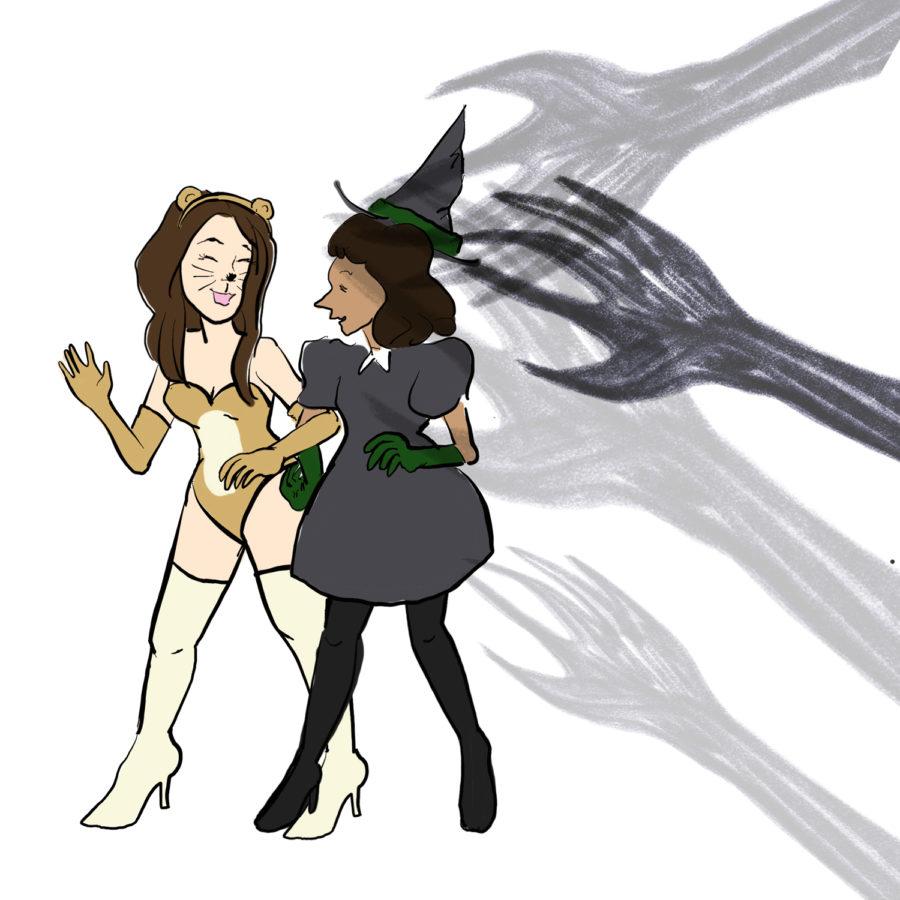More tricks than treats: Halloween’s sexual assault problem
November 1, 2018
Not even five minutes passed as I strolled down South Oakland last Halloween before a male student pointed at a girl in the mass of trick-or-treaters and said he could “tell by her costume” that she “wanted it.” I didn’t know him or get a good look at him because we were walking in different directions. But finally, when I realized what he said and just how ignorant it was, he had turned the corner, out of sight.
Despite the Halloween season’s many appeals — candy, costumes and pumpkin everything — there are often more tricks than treats. Halloween can turn dangerous when people regard a change in clothing as a change in expectations of acceptable sexual conduct.
Universities need to take these dangers more seriously by increasing security on and around campus. Pitt should also make an effort to inform students about apps and services already in place to protect student safety.
Six in 10 women think it’s common belief among men that assault survivors who wore provocative clothes were “asking for trouble.” One in five women, according to the National Sexual Violence Resource Center, will be sexually assaulted in their lifetime. And Halloween especially takes place during peak times of sexual assault on college campuses — according to rainn.org, more sexual assaults on campus take place during the fall semester than in the spring semester.
Revealing clothing does not count as consent. Neither does nodding, silence or previous sexual history count as consent. Nothing except enthusiastic, verbal affirmation counts as viable, consensual sex.
“This year, we have partnered with Student Affairs on their social media campaigns to encourage responsible behaviors and the ‘My Costume is not Consent’ campaign,” Joe Miksch, director of media relations at Pitt, said. “All counseling and support services will be available during this week.”
The “My Costume is not Consent” campaign originates from the “Cosplay is not Consent” campaign, which began in 2014 and aimed to emphasize that clothing choice does not replace verbal consent. This is a great initiative, and it’s only one of many programs that Pitt offers to aid sexual assault survivors.
Pitt Agents of Cultural Change offers active bystander training to help students make the right moves when they witness a sexual assault. The training program is even sponsored by the Title IX office at Pitt.
Pitt also has the Student Health Service, which offers medical support for students who have experienced assault, among many other medical services. The organization can also refer students to the counseling center for emotional support.
For LGBT students specifically, the Rainbow Alliance provides several community centers throughout Pittsburgh, where students can go to seek emotional support as well.
While these efforts are commendable, we need to actually prevent sexual assault and harassment rather than merely dealing with the repercussions afterward. The sheer prevalence of rape and sexual violence in our society depicts the lack of respect we have for each other’s bodies.
The combination of drinking, partying and predatory men can make Halloween a dangerous time for women — more than half of all sexual assaults involve alcohol consumption. Still, just like revealing clothing isn’t an excuse for rape, drunkenness isn’t, either.
But sexual violence isn’t just limited to closed parties or bars, it can also be found in the streets when walking from pregames to parties. And sexually inappropriate behavior is not limited to violence, either. Sixty-five percent of women will experience catcalling and sexual harassment at some point in their lives, a statistic that is not solely limited to Halloween.
Street harassment against women on a typical day, according to stopstreetharassment.org, could be defined as “honking, whistling, sexist remarks, offensive gestures, sexually explicit comments” and more.
Unfortunately, the prevalence of unsolicited sexual harassment and catcalling does not go away just because we dress like goblins or ghosts — in fact, it probably gets worse. It’s sad that on a should-be harmless day of dressing up in spooky costumes, the dangers of real life still pervade — and even more frequently and perniciously.
On Halloween, women should not be expected to alter the costumes they choose to wear just because men want to take clothing choice as an indication of consent. Women have the right to wear what they want without being sexually assaulted.
Halloween is a scary time — but not because of cobwebs and spooky costumes. For women the danger is very real. And the University, along with all men, should make a greater effort to stop it.




